Pete Bissonette has one of the about 650 homes Earth Sheltered Technology has built since it began in 1981. The company has houses in Minnesota and Wisconsin as well as in California and Alaska. “I loved every bit of building it,” Bissonette said. “I’m glad I made the decision to build it. I have no intention of ever selling it and made it wheelchair accessible so I can get around in case I need one.” Bissonette said he has long worried about tornadoes. An underground home, he thought, would protect against that. Such homes are also gaining popularity because of their ability to withstand hot temperatures and bush fires.
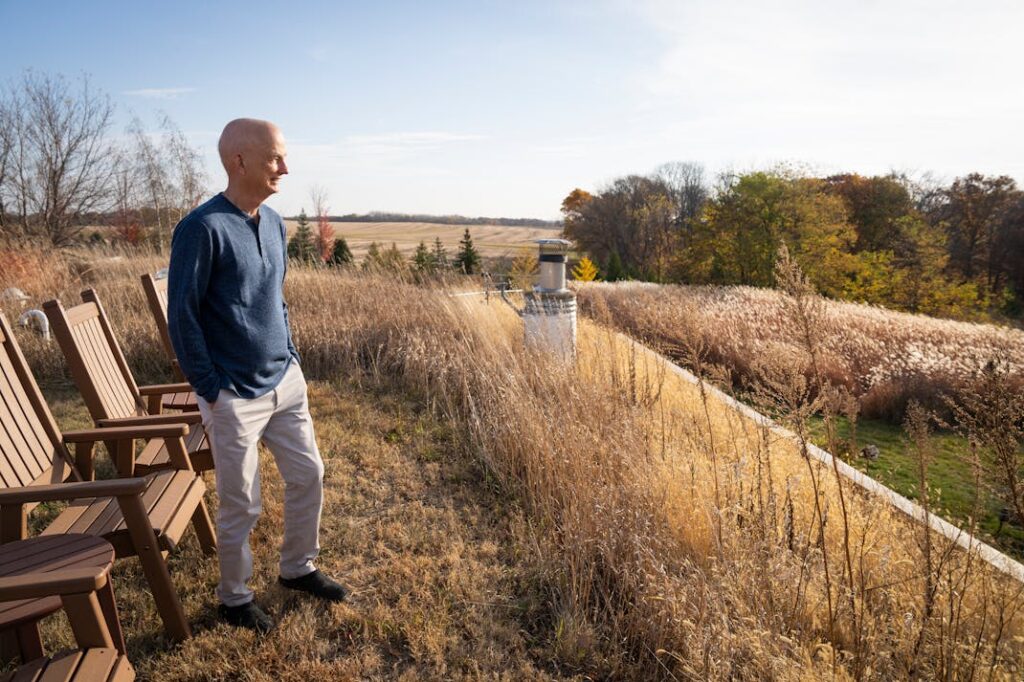 Earth-sheltered homes help reduce energy usage, especially when it comes to heating and cooling. Underground homes have other benefits too, including durability — particularly in the face of natural disasters like tornadoes — and low-maintenance needs (no need to paint when dirt and grass covers the whole house).
Earth-sheltered homes help reduce energy usage, especially when it comes to heating and cooling. Underground homes have other benefits too, including durability — particularly in the face of natural disasters like tornadoes — and low-maintenance needs (no need to paint when dirt and grass covers the whole house).
The U.S. Department of Energy’s website says Earth-sheltered homes can cost less to insure, as they naturally can withstand high winds, hailstorms, tornadoes and hurricanes.
Earth Sheltered Technology was a retirement job for Jeff Hickok’s father. Jeff said his dad had a fascination with living in a cellar as a child and created the company after finishing at his corporate job. “I didn’t realize how forward-thinking dad really was with energy-saving and safety of these things,” he said. “I’m so proud to be running the company that my father pioneered.”
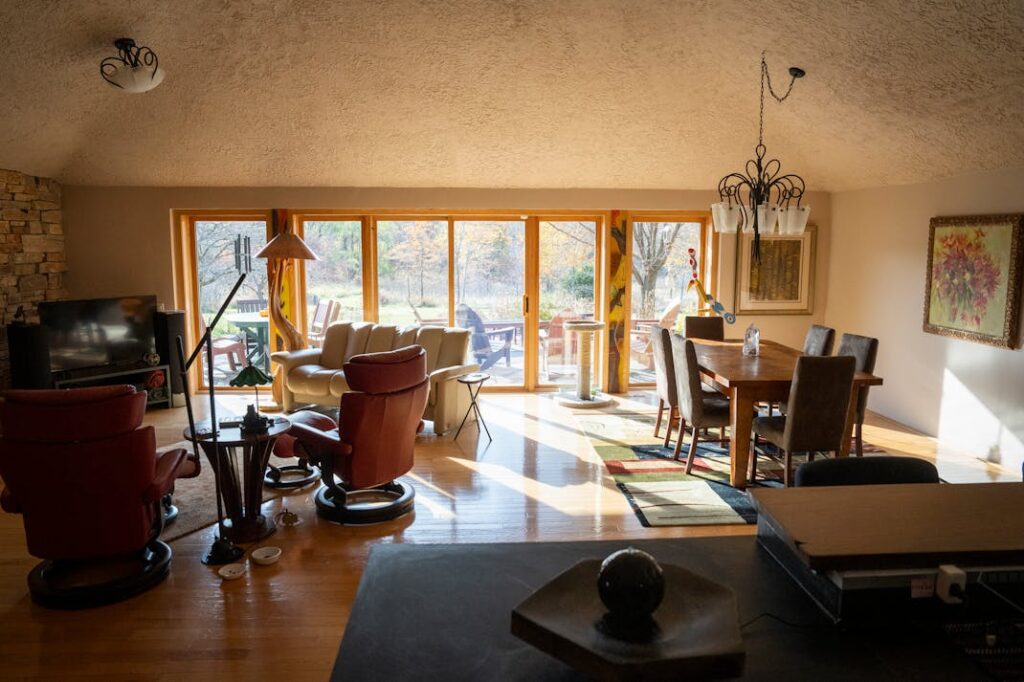 Another big selling point: Underground homes use about 80% less energy than a traditional home of its size. That’s because the ground insulates it to keep it at a stable 50-60 degree internal temperature. South-facing windows warm it during the day, Hickok said.
Another big selling point: Underground homes use about 80% less energy than a traditional home of its size. That’s because the ground insulates it to keep it at a stable 50-60 degree internal temperature. South-facing windows warm it during the day, Hickok said.
Being different is yet another perk of having an earth-sheltered home for Bissonette, who is working on an art piece made of 5,000 empty wine bottles. Outside of his two-bedroom, two-bathroom, 4,000-square-foot home, there’s a large labyrinth in his yard filled with statues from Bali. There’s also tall native grasses growing on the roof among a smattering of solar tubes and ventilation pipes. His home blends into the surrounding vegetation and looks like several hills with trees and shrubs growing on them.
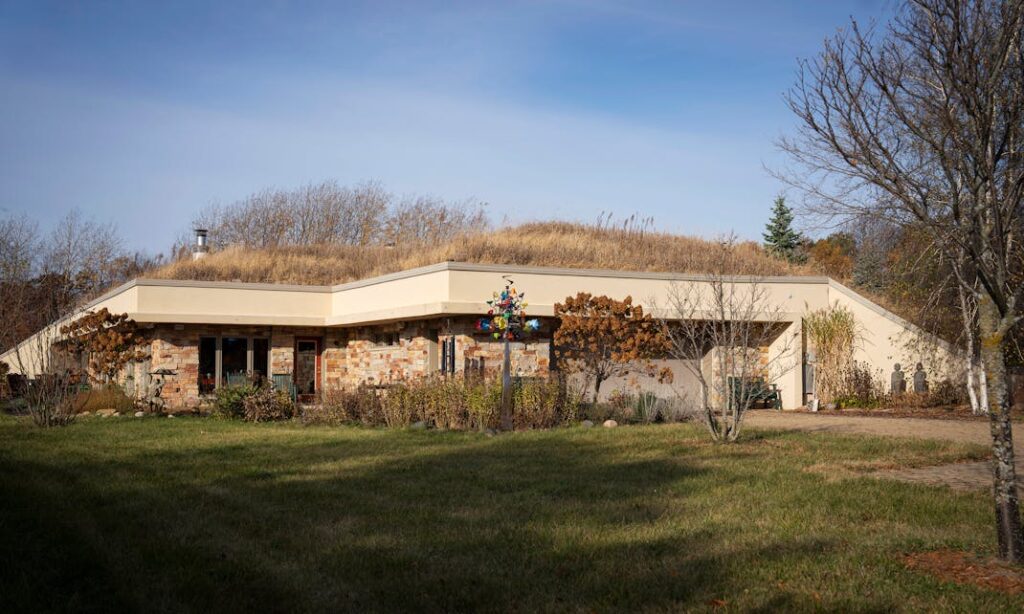 It’s not until visitors turn a corner that they’re able to see two garage doors poking out, alongside a front door, wide driveway and windows. When he built his house in 2001, many of his neighbors thought it looked like a military base because of how hidden it was from the main road.
It’s not until visitors turn a corner that they’re able to see two garage doors poking out, alongside a front door, wide driveway and windows. When he built his house in 2001, many of his neighbors thought it looked like a military base because of how hidden it was from the main road.
The rooftop patio makes it perfect for hosting, Bissonette said of the views of rolling farmland and acres of wildlife. Bissonette taught himself and installed much of the electrical work, also repurposing salvaged wood for the interior walls, making it uniquely his own.
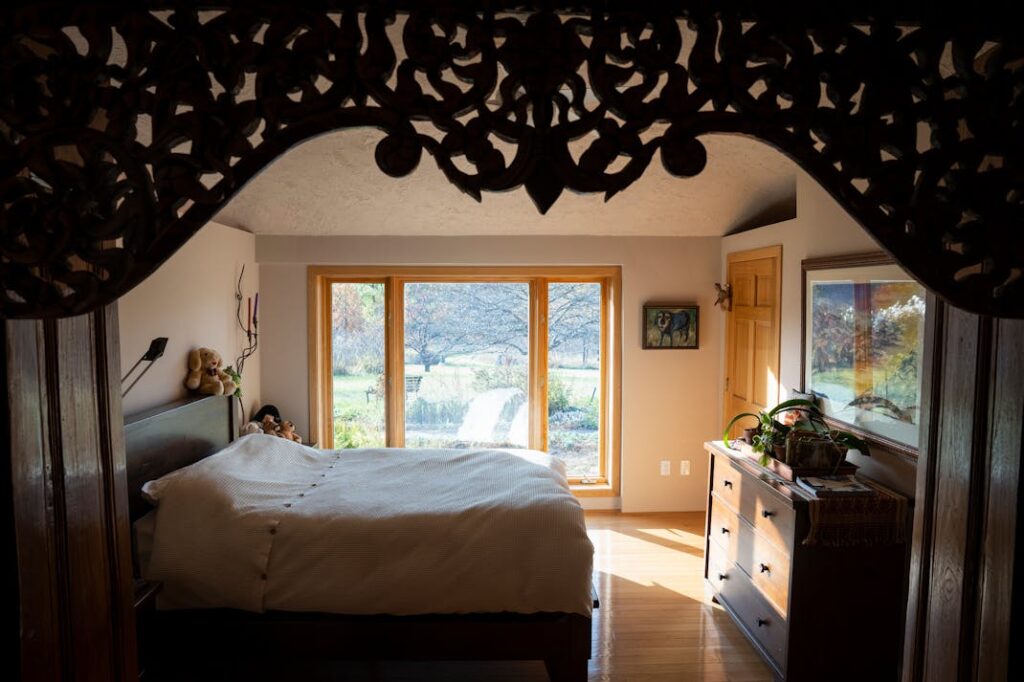 “What surprises people the most is how light it is in the house,” he said. “They expect it to be dark because it is underground, but the curved interior surface of the domes reflect light throughout the space, bouncing it across the inner surfaces, making it bright and light-filled.”
“What surprises people the most is how light it is in the house,” he said. “They expect it to be dark because it is underground, but the curved interior surface of the domes reflect light throughout the space, bouncing it across the inner surfaces, making it bright and light-filled.”
You can read the original article at www.startribune.com

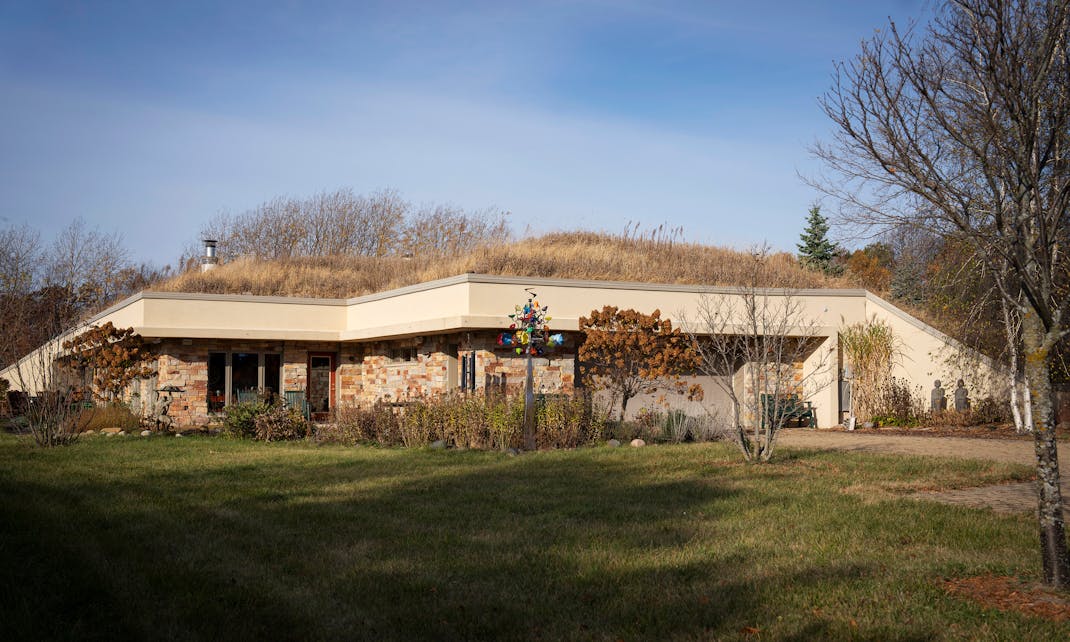
It’s essentially a bunker with the interior bathed in sunlight! Of course, subterranean dwellings won’t work in certain places like Florida and south Louisiana, but it’s perfect for places like Oklahoma tornado alley and mountainous regions. What they’ve managed to do with this specimen is truly amazing! I wonder whether any of the people affected by the Pacific Palisades fires will be rebuilding in the form of earth-sheltered houses instead of the matchboxes their old houses were.
Even in regions like Florida, earth-bermed dwellings can be practical.
Only if you built an artificial hill first, Florida is notoriously flat.